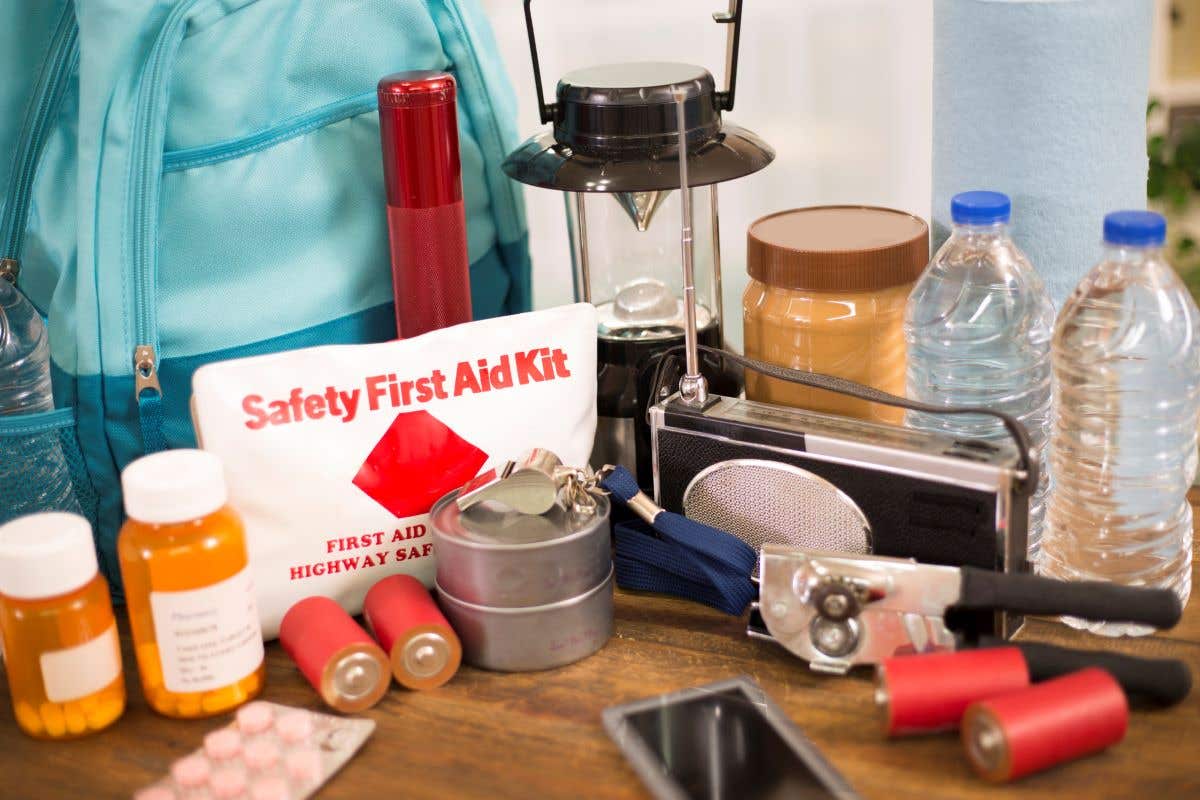Florida homeowners know that hurricanes and tropical storms are simply a part of life in the Sunshine State. Even though there is an official hurricane season in Florida, these storms can happen at any time. Some only cause minor damage, while others have caused utter devastation over vast swaths of the state.
When is hurricane season in Florida?
The Atlantic hurricane season runs from June 1 until November 30, but the peak time for hurricanes in Florida is between mid-August and late October. That’s when the waters in the equatorial Atlantic and Gulf of Mexico have warmed enough to help support the development of tropical waves.
Tropical systems vary depending on the intensity, size, and even the angle that it hits your area. There's a big difference between these storms, so it's best to know what to expect when one approaches.
Types of tropical cyclones
-
Tropical depression: Tropical cyclone with maximum sustained winds of 38 mph or less
-
Tropical storm: Tropical cyclone with sustained winds ranging from 39 to 73 mph
-
Hurricane: Tropical cyclone in the Atlantic, Caribbean Sea, Gulf of Mexico, or eastern Pacific with maximum sustained winds of 74 mph or greater
-
Major hurricane: Hurricane which reaches Category 3 (sustained winds greater than 110 mph) on the Saffir-Simpson Scale
What is the Saffir-Simpson Scale?
You've probably heard of the Saffir-Simpson Hurricane Wind scale. But what exactly is it, and how can it help you make the most of your hurricane prep?
The Saffir-Simpson Hurricane Wind Scale is a rating method used to categorize hurricanes based on their maximum sustained wind speeds. It doesn’t consider other potentially deadly and damaging hazards such as storm surge, rainfall flooding, and tornadoes, which any level of hurricane can produce.
|
SAFFIR-SIMPSON HURRICANE WIND SCALE SUMMARY |
||
|
Category |
Winds |
Damage summary |
|
1 |
74 – 95 mph |
Very dangerous winds, some damage likely. Well-constructed frame homes could sustain roof, shingle, vinyl siding, and gutter damage. Large tree branches may snap and some trees may fall. Power outages may result from damage to power lines and poles. |
|
2 |
96 – 110 mph |
Extremely dangerous winds, extensive damage likely. Well-constructed frame homes could sustain major roof and siding damage. Trees can be snapped or uprooted, blocking roads. Near-total power loss is expected with outages that could last from several days to weeks. |
|
3 |
111 – 129 mph |
Devastating damage will occur. Well-built frame homes may incur major damage or destruction of roof decking and gables. Trees will be snapped or uprooted, blocking roads. Electricity and water will likely be unavailable for several days to weeks. |
|
4 |
130 – 156 mph |
Catastrophic damage will occur. Well-built frame homes can sustain severe damage with loss of most of the roof structure and/or some exterior walls. Most trees will be snapped or uprooted. Power lines and poles will likely fall. Fallen trees and power lines may make travel difficult and isolate residential areas. Power outages can last weeks to possibly months. Most of the area may be uninhabitable for weeks or months. |
|
5 |
> 156 mph |
Catastrophic damage will occur. Many frame homes will be destroyed, with total roof failure and wall collapse. Fallen trees and power poles may isolate residential areas. Power outages will last for weeks to possibly months. Most of the area will be uninhabitable for weeks or months. |
Where do hurricanes hit the most in Florida?
Hurricanes can impact the entire state of Florida. While the degree of impact may be different along the coast compared to further inland, the whole state is susceptible to some level of hurricane damage.
Because Florida is a low-lying peninsula with long stretches of ocean coastline on three sides, the whole state is an easy target for hurricanes and tropical storms. The southeast coast of Florida is highly susceptible to hurricanes making landfall, as is the state's panhandle area.
Areas around Tampa, Jacksonville, and the Big Bend (a geographic region of North Florida where the Florida Panhandle transitions to the Florida Peninsula south and east of Tallahassee) don’t have as high of a risk of a direct strike from a hurricane. However, these locations are still susceptible to them during every hurricane season.
And even if a hurricane makes landfall elsewhere in the state, the impacts are almost always felt hundreds of miles away, usually in the form of heavy winds and days of sustained heavy rainfall.
What are the biggest causes of property damage from hurricanes?
The primary concern during any Florida hurricane season is your family's and your personal safety. Understanding the dangers, being well-prepared before the storm, and cooperating with evacuation orders are essential to ensure your safety.
But if you're a homeowner, it's also important to consider the potential damage to your home, even if you're physically safe. Everyone knows that a hurricane can obliterate anything in its path. You need to prepare your home (as best you can) to withstand the most damaging elements of a hurricane.
Winds
Hurricane-force winds can easily damage or destroy mobile homes and other non-permanent structures. Roofs, trees, shingles, gutters, and power lines are also frequently damaged by hurricane-force winds. Winds are typically the most damaging part of a hurricane, with the highest winds occurring just outside of the eye (or center) of the storm. Florida's flat terrain allows winds to remain strong even after the storm makes landfall.
Storm surge
Storm surge is the wall of water pushed toward the shoreline as a hurricane moves onshore. Storm surge combines with the local tide and the wind-driven waves to drive a large volume of water onshore, often resulting in significant flood damage. Storm surge can be as high as 25 feet in an intense hurricane.
Flooding
Slow-moving tropical storms and hurricanes can produce extreme amounts of rain, leading to coastal and inland flooding. Flooding can occur hundreds of miles from the center of a storm and often occurs days after landfall from the remnants of a former tropical system.
Tornadoes
Tropical systems often spawn tornadoes, typically in the right front quadrant of the storm or in the far outer rain bands. These tornadoes generally are not as intense as those produced by non-tropical severe storms, but they move quickly and are often rain-wrapped, making them difficult to see as they approach.
Does Florida homeowners insurance cover hurricane damage?
Hurricanes are capable of doing catastrophic damage to homes along the Florida coast and even several hundred miles inland. That damage is a real threat for Florida homeowners, and hurricane coverage is a real need.
Florida hurricane insurance is not a separate insurance policy that covers hurricane damage. Under standard homeowners insurance in Florida, hurricane wind damage is typically covered after you pay a windstorm or hurricane deductible. If your home sustains damage from a hurricane, you’re usually responsible for paying the hurricane deductible amount before your insurance coverage kicks in.
Hurricane deductibles are subject to a "coverage trigger." This means the hurricane deductible only applies if that trigger comes into play. In Florida, state law requires hurricane deductibles to be triggered by windstorm losses resulting only from hurricanes declared by the National Weather Service. Hurricane deductibles apply for damage from when a hurricane watch or warning is issued for any part of Florida, up to 72 hours after such a watch or warning ends, and anytime hurricane conditions exist throughout the state.
A Florida hurricane deductible applies only once during a hurricane season. If you’re unfortunate enough to have damage caused by more than one named storm in a season, you'll only have to pay the hurricane deductible once.
What's covered?
Hurricane insurance in Florida typically covers the following:
-
Your dwelling
-
Other structures on your property (e.g., your garage, fence, greenhouse, shed, etc.)
-
Your personal belongings (e.g., clothing, furniture, etc.)
-
Temporary relocation and other essentials above your normal living costs if the hurricane wind damage makes your home uninhabitable
What's not covered?
The hurricane coverage in your Florida homeowners policy can’t cover everything. For example, it typically doesn’t cover storm surge and flood damage that accompanies hurricanes. However, it may sometimes cover water damage if it’s caused by wind damage.
How might that happen? Imagine during a hurricane, the wind causes a portion of your roof to blow off, letting rain in that ultimately damages your possessions. If that happens, then your home insurance may kick in to cover both your roof repairs and the cost of replacing your items.
Note: Florida homeowners insurance almost never covers flooding. You’ll likely need separate Florida flood insurance to be fully protected against storm surge and flooding caused by a hurricane or tropical storm.
How can wind mitigation help with my Florida home insurance costs?
We recognize that homeowners insurance in Florida is costly, partly due to the significantly increased risk of damaging tropical storms and hurricanes. Fortifying your home to withstand hurricane damage is a smart idea for any homeowner in the state. Moreover, it can help you save some money on your homeowners insurance.
Wind mitigation, for example, makes your home more resistant to wind damage. It involves installing or retrofitting certain wind-resistant features to your home, including hurricane shutters, impact-resistant windows and doors, water barriers in the roof, and more. After you then undergo and document a wind mitigation inspection, most insurance companies will reduce your Florida home insurance premiums.
Looking to lower your premium? Get more tips in our article on controlling home insurance costs.


